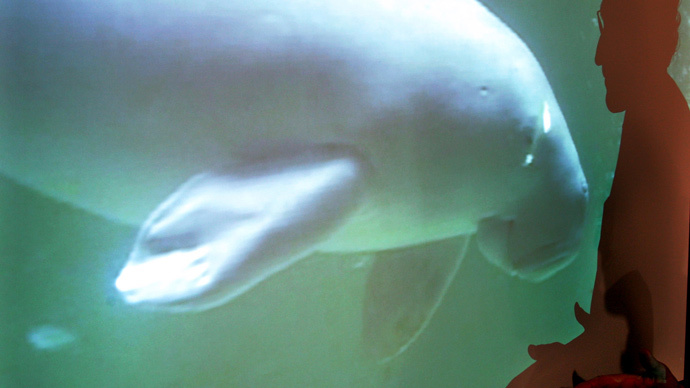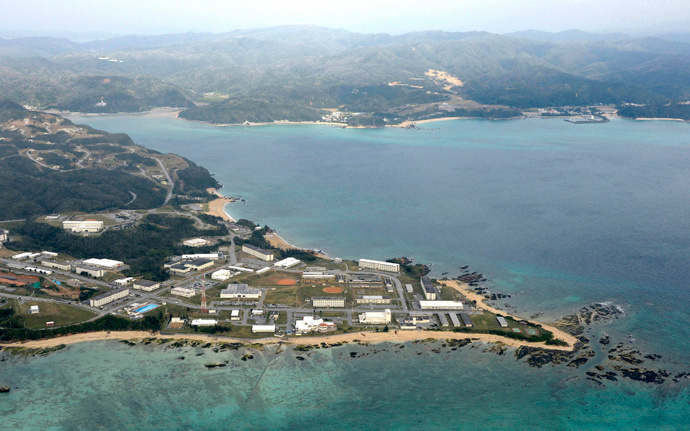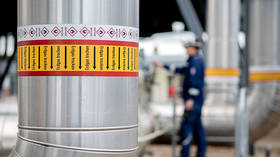‘Endangered Okinawa dugong’s habitat to be bulldozed for the sake of US military base’

If the US military base in Okinawa is relocated to Henoko, the habitat of the endangered Okinawa dugong sea mammal, will be wiped off the map, said Peter Galvin of the Center for Biological diversity. The species is already down to a few dozen, he added.
RT:What is so wrong about the re-location of the US base from an ecological prospective?
Peter Galvin: The organization I work for, The Center for Biological Diversity focuses on the wildlife environmental protection [of] endangered species. Our focus is to protect wildlife and animals and the environment where they are threatened. And in the case of Okinawa we have a situation where there is an endangered marine mammal, the Okinawa dugong - a very, very rare population of dugongs which is kind of like a sea cow, a little bit like a manatee that they have in the US. And these gentle giants of the ocean... there is between 12 and 15 dugongs remaining in Okinawa... They are a critically endangered population and the site of their habitat in Okinawa, the primary habitat is the site that US and Japanese governments want to fill in to expand a military base in Henoko.
READ MORE: ‘Don’t rape the sea!’ Hundreds protest US military base relocation plan in Japan
The base controversy has a strong environmental component to it, as well as folks in Okinawa that are concerned about peace issues, sovereignty issues, and military threat issues. Our focus is environmental issues. In this situation there is a convergence of a variety of issues including environmental issues, peace, Okinawa sovereignty issues - all playing together in one action. It is a very controversial proposal. The base plan would fill in a very rich area of coral reef in a place called Oura Bay which is on the eastern side of Okinawa, north east Okinawa. And it would be just an enormous landfill project into the ocean which has a huge number of people in Okinawa, in Japan, throughout the world up in arms that in this day and age the US and Japanese governments would pay so little heed to the local population, that they would basically just bulldoze over the local opposition and literally bulldoze over the coral reef and fill it in. So the dugong is a desperately endangered marine mammal that we’ve been working to protect for two decades. Our group along with several other groups launched a lawsuit in US Federal Court, a number of years ago to stop this base expansion project. Our case still continues through the court system. But unfortunately, the project is in the beginning phases now. And as you can see there’s a huge amount of controversy in Okinawa over it that is now manifesting.

RT:Could you give examples of how the re-location of the US base to Henoko is harming flora and fauna? We've heard about concrete blocks in the ocean. Any other examples?
PG: Literally, you used the word concrete. And yes, as a matter of fact one of the aspects of any kind of project like this is the contractors bore into the ocean at different places to see the strength of the material at the ocean floor. The sound of the drilling, the construction process, and all the ships out there dumping the concrete pilings into the ocean. ... Dugongs are herbivores and they feed on sea grass, they graze like a cow... The huge amount of disturbance in the area is causing the dugongs to change their patterns and that’s a risk enough. But here is the real problem: after these boring surveys and the concrete blocks, if the project continues literally millions and millions of tons of soil are brought in and the ocean itself is filled and land is created from the ocean, the coral reef will be entirely decimated, the sea grass in that entire area will be gone. This is the prime feeding habitat for the endangered Okinawa dugong. These species is down to a few dozen individuals and this is its primary habitat. The impact from the base cannot be understated or overstated and will literally wipe this area of the habitat off the map.
MORE:
The statements, views and opinions expressed in this column are solely those of the author and do not necessarily represent those of RT.
The statements, views and opinions expressed in this column are solely those of the author and do not necessarily represent those of RT.












